The Case Explorer allows you to view and analyze individual cases in your process, displaying detailed information about activities, resources, and other case attributes. This tool is essential for investigating specific cases, identifying patterns, and monitoring case-level metrics.
Overview
The Case Explorer displays a list of individual cases with regards to activities, resources, and other attributes. You can specify the attributes you wish to explore and select the default sorting option to organize your view effectively.
Common Uses
- Get an overview of cases and their attributes
- Explore and investigate issues with specific cases
- Set up email notifications with case data for regular monitoring
Settings
Basic Configuration
Attributes: Select the specific attributes that you wish to explore. These can include case IDs, timestamps, resource names, or any custom attributes from your event log.
Sort Column: Select which column you wish to sort by to organize your case data.
Sort Direction: Choose whether to sort in ascending or descending order.
Max Rows: Specify the maximum number of rows to display (default: 10000).
Email Settings: If you wish to receive this report through email, specify the frequency of notifications.
Column Format Settings
Click 'Set Formats' then 'Add Column Format' to customize how attributes are displayed. You can select the attribute, edit its display name, and choose the display format:
Text: Format text as upper case or lower case.
Number: Format number as a percentage, currency, an absolute value, or specify the number of decimal points to show.
Date: Format date as:
- Short date (6/1/2021)
- Long date (Friday, June 1, 2021)
- Date and time (6/1/2021 1:34pm)
Duration: Format duration as hours, days, months, years, etc., or choose TimeAuto for auto format detection.
Boolean: Format Boolean value as either Yes/No or True/False.
Examples
Example 1: Explore Cases by Invoice Details
In this example, we'll explore invoice cases by viewing the invoice ID, total amount value, and due date.
Step 1: Configure the Case Explorer settings:
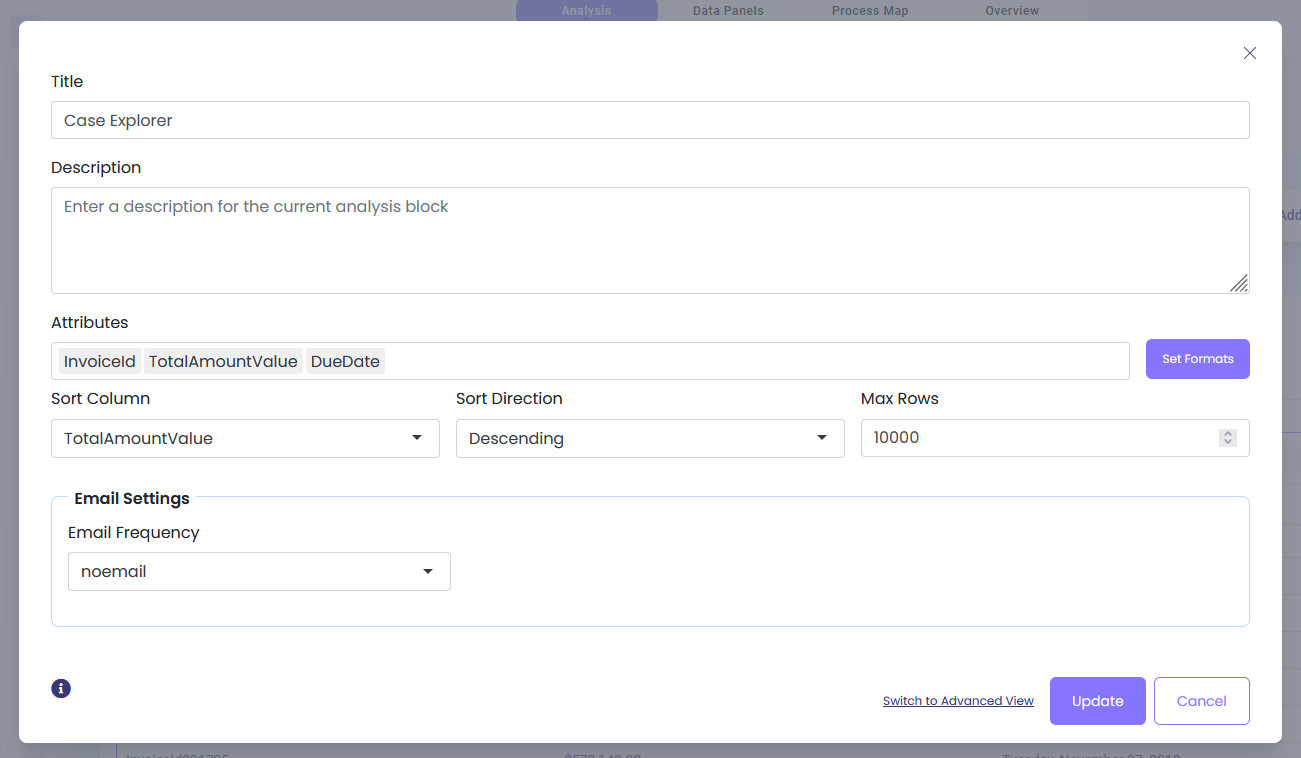
Step 2: Specify column formats for better readability:
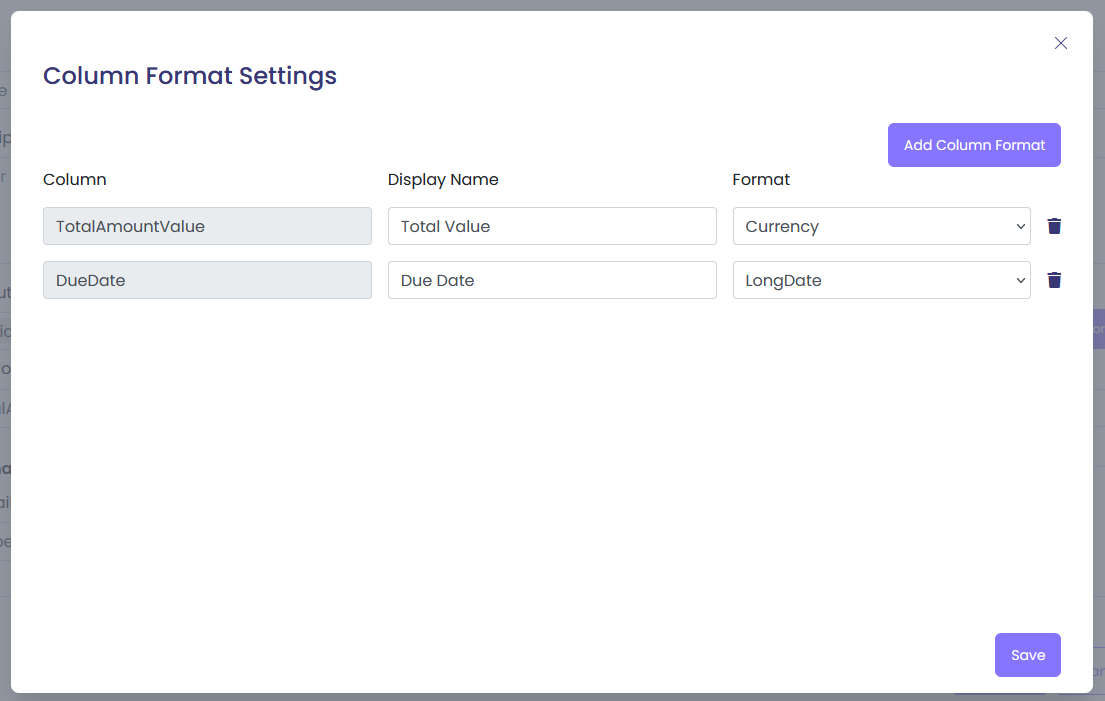
Step 3: View the Case Explorer output:
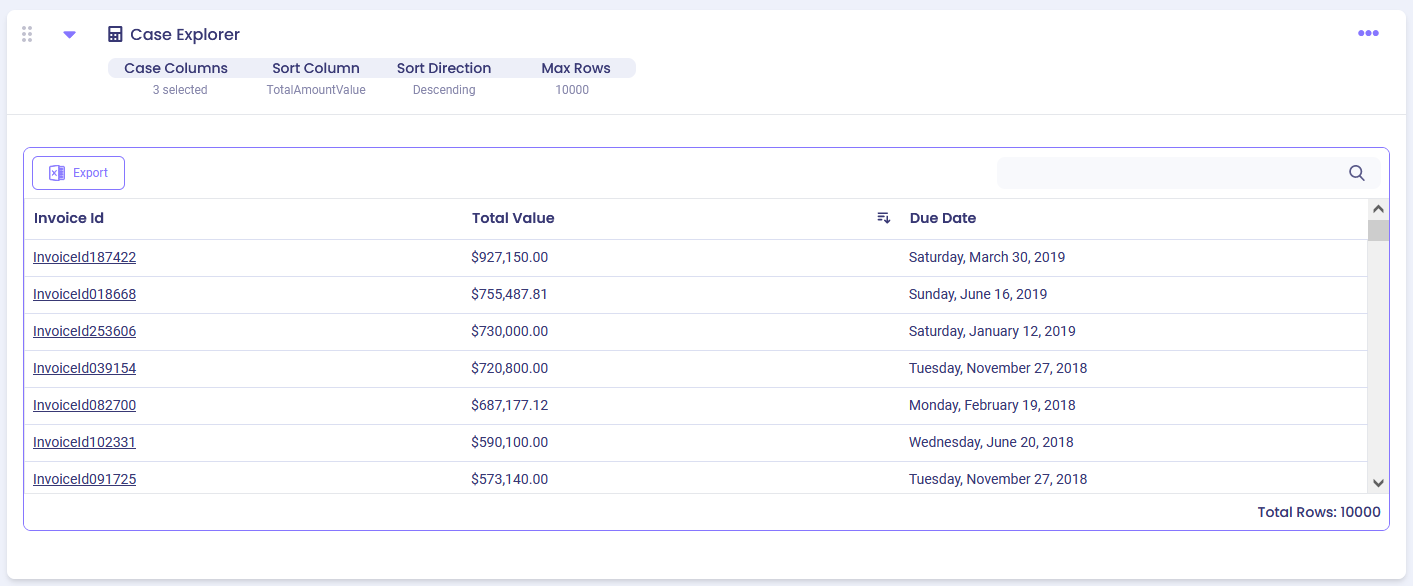
Example 2: Explore Cases by Purchase Order Details
Explore cases in regards to the quantity of items purchased, vendor region, and price changes.
Step 1: Configure the Case Explorer with purchase order attributes:
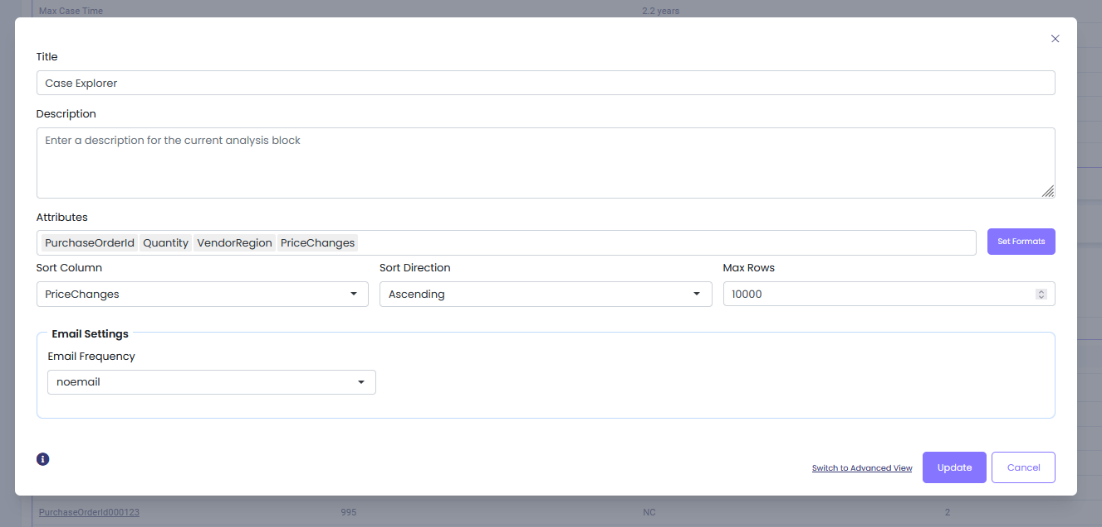
Step 2: In Set Formats, specify purchase order ID to be formatted as lower-case text and price changes to show 2 decimal points:
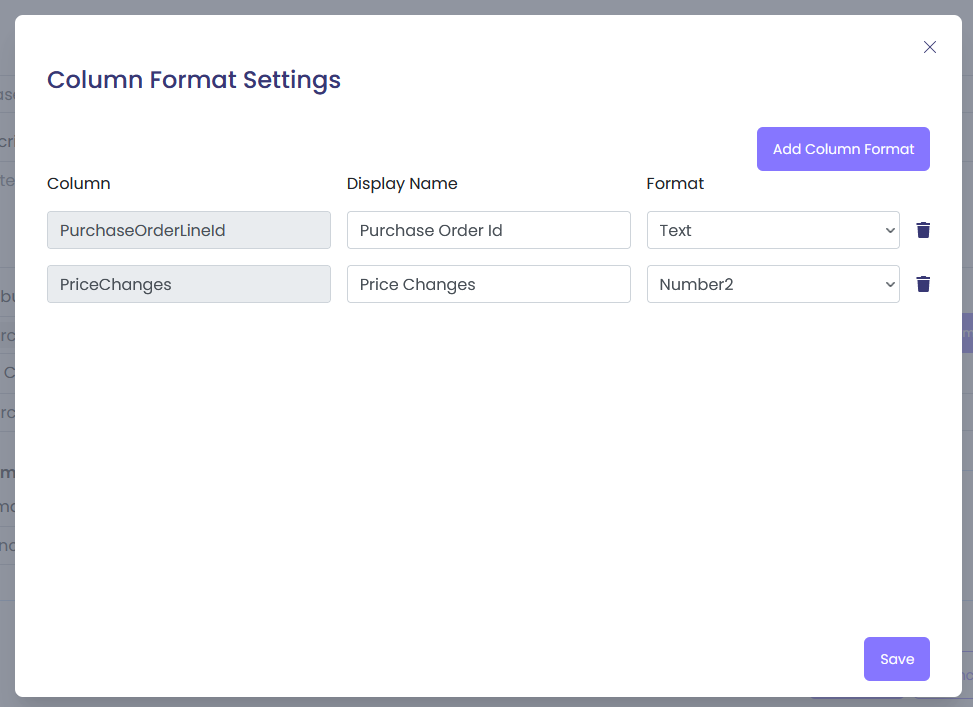
Step 3: View the Case Explorer output:
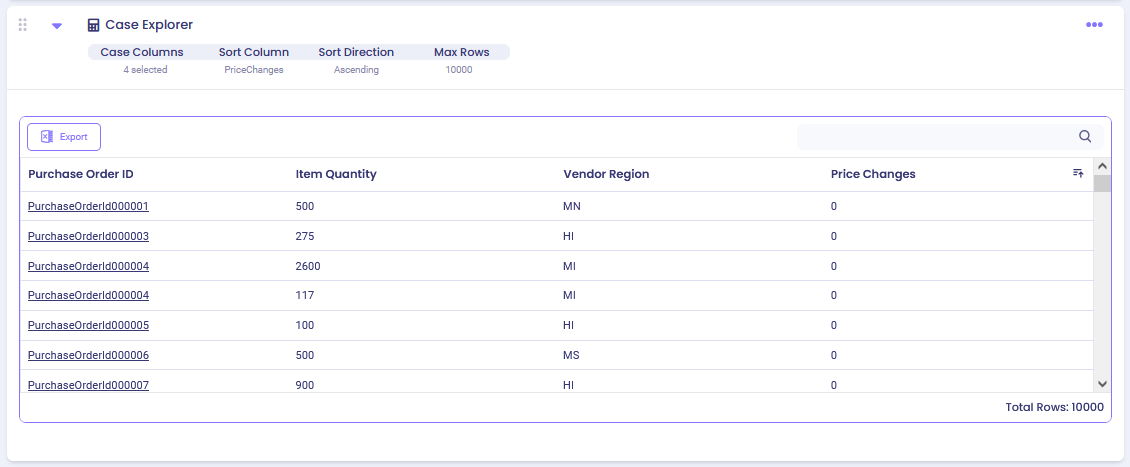
Step 4: To see details of a specific case, click on any cell to review the case fields, case values, and activity fields:
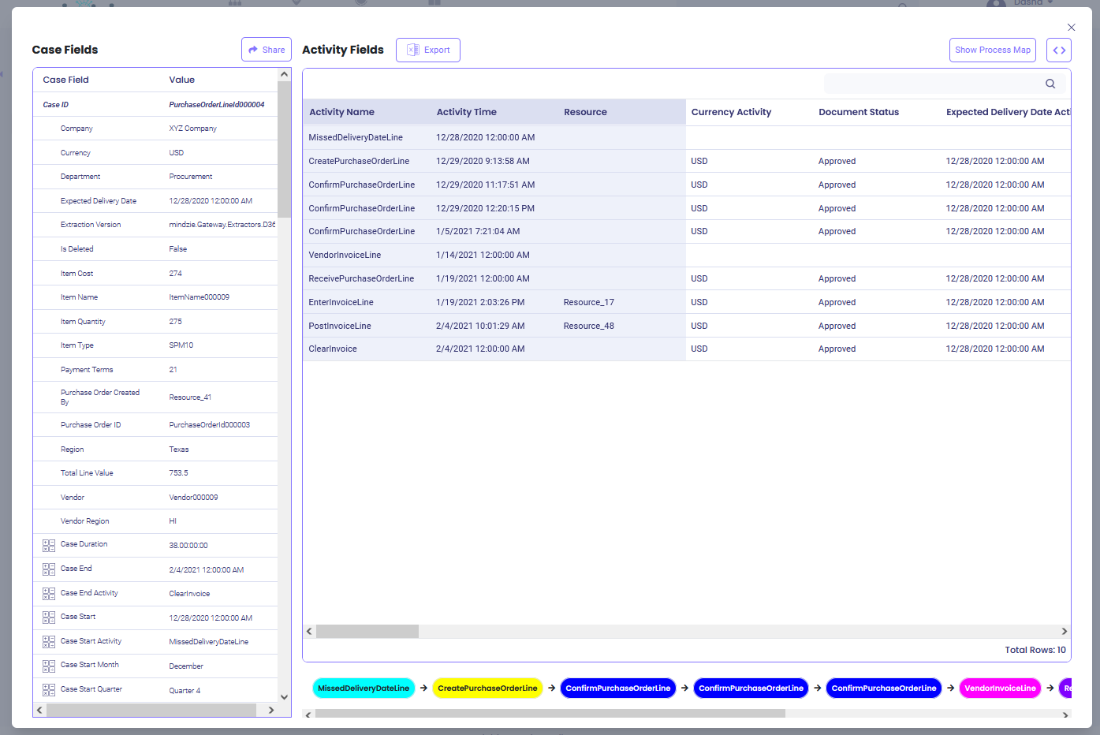
Example 3: Explore Cases by Delivery Timeliness
Analyze cases based on their delivery timeliness metrics.
Step 1: Configure the Case Explorer with delivery-related attributes:
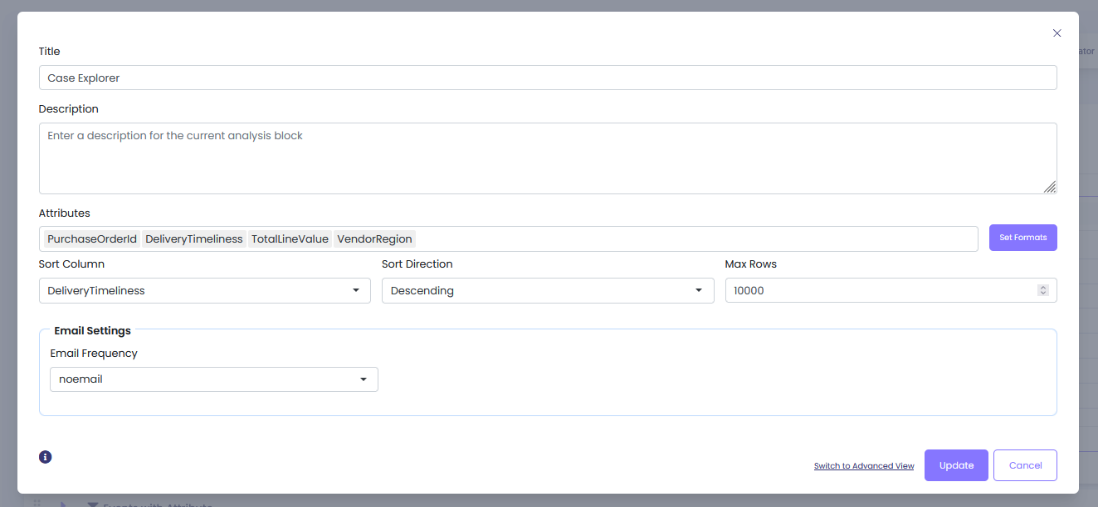
Step 2: View the Case Explorer output:
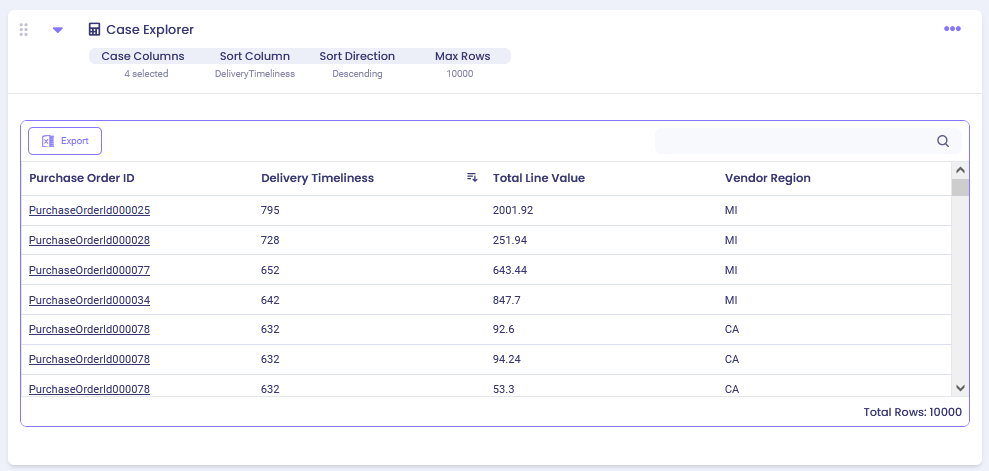
Additional Features
Exporting Data
Click the "Export" button at the top of the Case Explorer output to download your case data for external analysis or reporting.
Case Detail View
Click on any cell in the Case Explorer table to open a detailed view showing:
- Case Fields: All attributes associated with the selected case
- Case Values: The specific values for each attribute
- Activity Fields: Details about activities that occurred within the case
This detailed view is useful for deep-dive investigations into specific cases or anomalies.
This documentation is part of the mindzieStudio process mining platform.